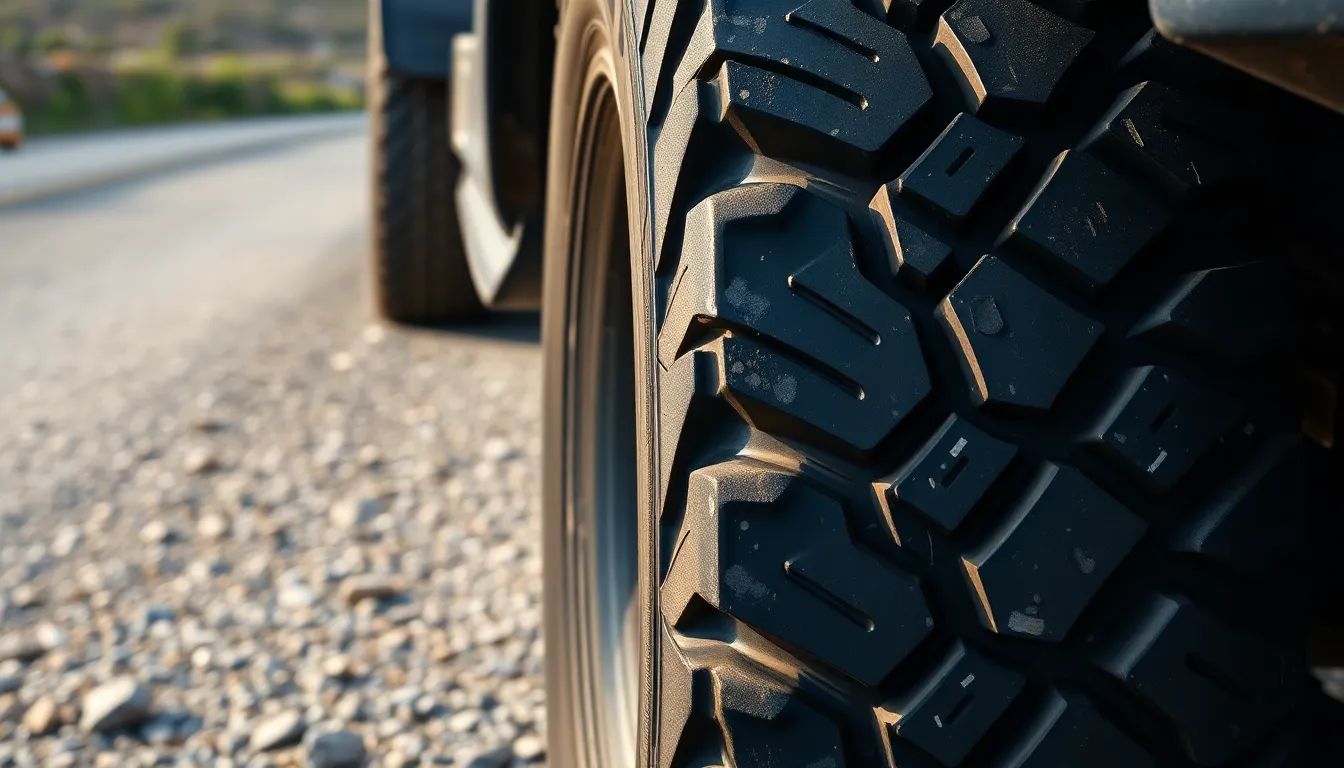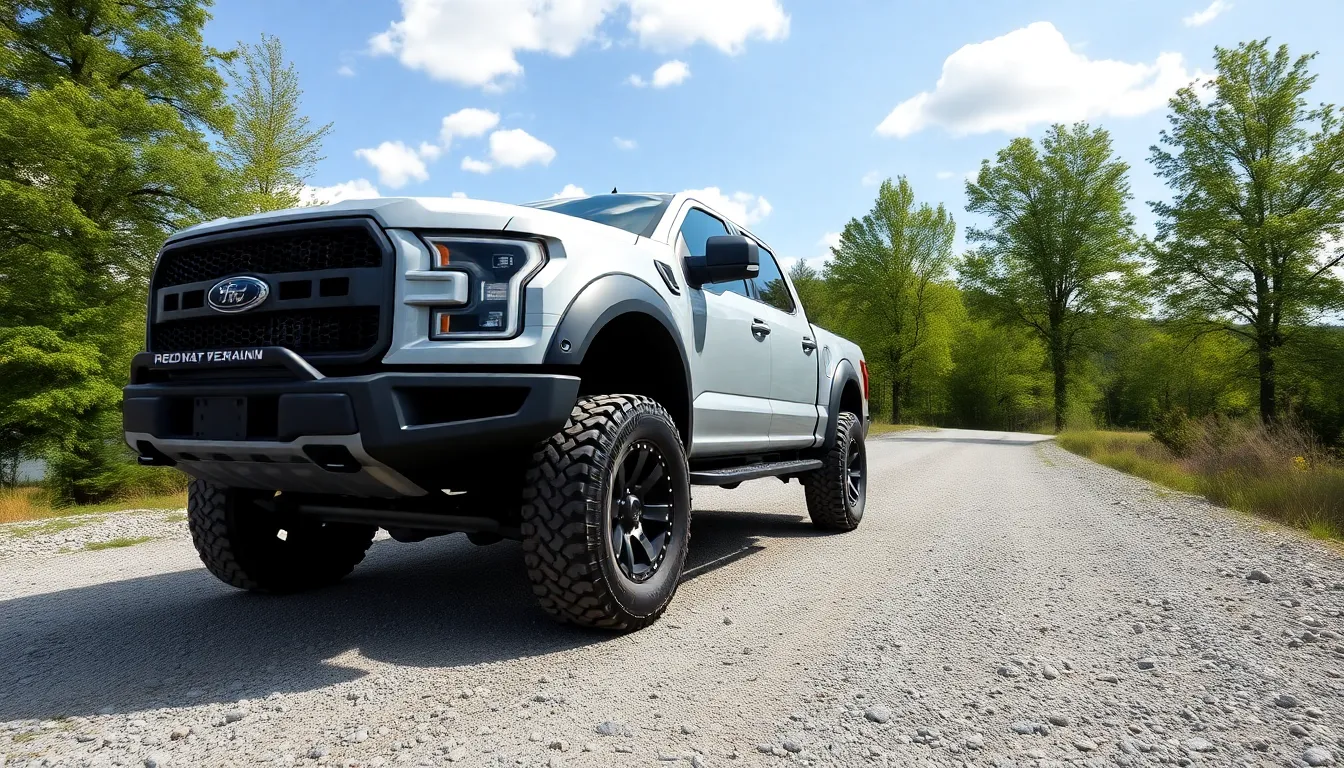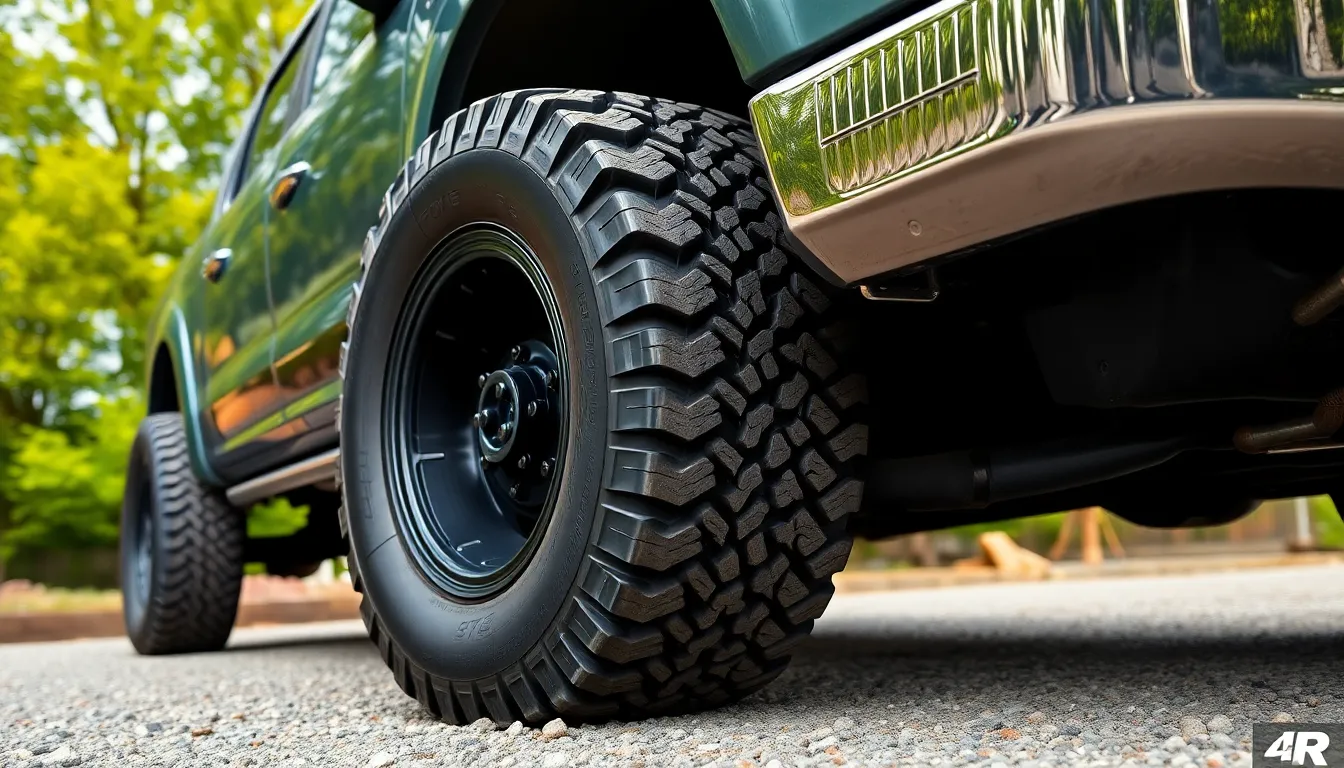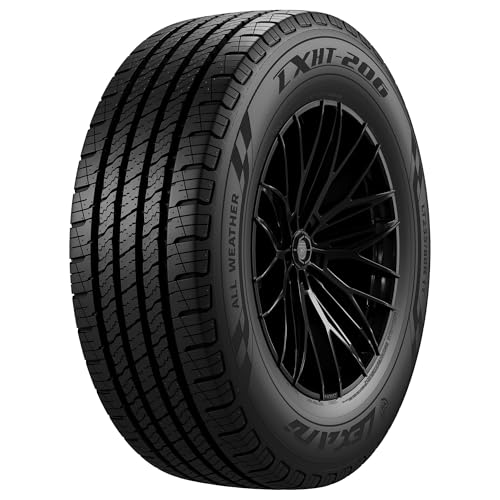When we’re shopping for new tires or trying to understand our vehicle’s specifications, tire size numbers can seem like a confusing code. The designation “285 60 R20” appears on countless trucks and SUVs, but what do these numbers actually mean in real-industry measurements?
We’ve all been there – standing in front of a tire display or reading our vehicle manual, wondering how to translate these cryptic numbers into something we can visualize. Converting 285/60R20 to inches isn’t just about satisfying curiosity; it’s essential for making informed decisions about tire replacements, understanding clearance requirements, and ensuring optimal vehicle performance.
Whether you’re planning a tire upgrade, checking compatibility for your lifted truck, or simply want to understand your current setup better, we’ll break down exactly what 285/60R20 translates to in inches. This knowledge empowers you to make confident choices about your vehicle’s most critical contact point with the road.
Understanding Tire Size Notation: 285/60R20 Breakdown
Tire size notation follows a standardized format that manufacturers use worldwide to communicate essential specifications. Breaking down 285/60R20 reveals three critical measurements that determine tire performance and compatibility.
What Each Number Represents
The first number 285 indicates the tire width measured in millimeters from sidewall to sidewall. This measurement represents the widest point of the tire when mounted on the recommended rim width.
Our second number 60 shows the aspect ratio as a percentage of the tire width. This figure tells us the sidewall height equals 60% of the 285mm width measurement.
The letter R stands for radial construction, which describes how the tire’s internal structure is built. Radial tires feature cord plies that run perpendicular to the direction of travel.
Finally, 20 represents the wheel diameter in inches that the tire fits. This measurement indicates the size of the rim or wheel that pairs with this exact tire.
How to Read Tire Sidewall Markings
Tire sidewall markings appear in a exact sequence that follows Department of Transportation regulations. We locate the size designation prominently displayed on the tire’s outer sidewall.
Additional markings include load index numbers that indicate maximum weight capacity. Speed rating letters follow the size designation and show the tire’s maximum safe operating speed.
Manufacturing date codes appear as four digits representing the week and year of production. The first two digits show the week while the last two indicate the year of manufacture.
Tread wear indicators and temperature grades provide performance ratings that help compare different tire options. These alphanumeric codes appear alongside the primary size designation on most passenger and light truck tires.
Converting 285/60R20 to Inches

We’ll break down each component of the 285/60R20 tire size to provide exact measurements in inches. Converting these metric and ratio values helps us understand the true physical dimensions of your tire.
Width Conversion (285mm to Inches)
The first number in our tire size represents the tread width measured in millimeters from sidewall to sidewall. We convert 285 millimeters by dividing it by 25.4, which gives us the equivalent measurement in inches. Our calculation shows that 285mm equals 11.22 inches of tire width. This width measurement determines how much road contact your tire maintains and affects your vehicle’s handling characteristics.
Sidewall Height Calculation
The aspect ratio of 60 tells us the sidewall height as a percentage of the tire’s width. We multiply our width of 11.22 inches by 0.60 to find the sidewall height. Our calculation reveals a sidewall height of 6.73 inches from the rim edge to the tread surface. This sidewall dimension directly impacts your ride comfort and handling response since taller sidewalls typically provide more cushioning over rough surfaces.
Overall Diameter in Inches
We determine the complete tire diameter by adding the wheel diameter to twice the sidewall height. Our 285/60R20 tire measures 33.46 inches in total diameter when properly mounted and inflated. This overall diameter affects your vehicle’s ground clearance, speedometer accuracy, and gear ratios. The measurement includes the 20-inch wheel diameter plus 13.46 inches of combined sidewall height from both sides of the tire.
| Measurement | Inches |
|---|---|
| Width | 11.22 |
| Sidewall Height | 6.73 |
| Overall Diameter | 33.46 |
| Wheel Diameter | 20.00 |
Key Measurements of 285/60R20 Tires

Converting 285/60R20 tires into inches reveals precise physical dimensions that directly impact vehicle performance. These standardized measurements help us understand exactly how these tires fit and function on our vehicles.
Tire Width: 11.22 Inches
The 285mm tire width translates to exactly 11.22 inches across the tread surface. This measurement represents the tire’s contact patch width when properly mounted and inflated to manufacturer specifications. Wider tire footprints like this provide enhanced traction capabilities for trucks and SUVs operating on various terrain types.
Sidewall Height: 6.73 Inches
Sidewall height measures 6.73 inches from the wheel rim to the outer tread surface. We calculate this dimension by multiplying the tire width (11.22 inches) by the aspect ratio (60%). Lower sidewall profiles typically offer improved handling response while taller sidewalls provide better ride comfort over rough surfaces.
Overall Diameter: 33.46 Inches
The complete tire diameter reaches 33.46 inches when properly inflated and mounted. This measurement combines both sidewall heights plus the 20-inch wheel diameter to determine total tire size. Overall diameter directly affects speedometer accuracy, ground clearance, and gear ratio performance in our vehicles.
| Measurement | Inches | Millimeters |
|---|---|---|
| Tire Width | 11.22 | 285 |
| Sidewall Height | 6.73 | 171 |
| Overall Diameter | 33.46 | 850 |
| Circumference | 105.1 | 2,670 |
| Wheel Diameter | 20.0 | 508 |
Additional specifications include a circumference of approximately 105.1 inches and 603 revolutions per mile. Recommended wheel widths range from 8 to 10 inches for optimal tire performance and safety.
Comparing 285/60R20 to Other Popular Tire Sizes

Our 285/60R20 measurements serve as a baseline when evaluating alternatives for trucks and SUVs. Understanding how this size compares to other popular options helps make informed replacement decisions.
Similar Sized Alternatives
The 295/50R20 tire provides our closest match with a wider 11.61-inch tread width while maintaining nearly identical overall diameter. This alternative offers enhanced road contact and potentially improved handling characteristics on paved surfaces.
Our 275/60R20 option delivers a slightly narrower 10.83-inch width compared to the standard 285/60R20 configuration. Both tires share the same 60 aspect ratio and 20-inch wheel diameter, making this swap straightforward without affecting speedometer accuracy.
The 35/12.5R20 tire creates our most dramatic size difference with a 1.56-inch larger diameter than the 285/60R20. This larger option produces a 4.4% speedometer error, requiring calibration adjustments for accurate readings. The 35-inch overall diameter provides increased ground clearance while the 12.5-inch width offers broader tread contact.
Performance Differences
Traction capabilities vary significantly between these tire sizes based on contact patch dimensions and tread patterns. Our 285/60R20 configuration delivers optimized surface contact through its aggressive sidewall design, improving grip on various terrain types including loose surfaces and inclined roads.
Speed ratings remain crucial for safety considerations across all size comparisons. The 285/60R20 typically carries ratings that prevent overheating at sustained highway speeds, while larger alternatives like the 35/12.5R20 may feature different rating specifications based on their intended applications.
Handling characteristics change noticeably between narrower and wider tire options. Our 295/50R20 alternative provides increased steering responsiveness through its wider contact patch, while the 275/60R20 offers improved fuel economy potential through reduced rolling resistance compared to the standard 285/60R20 configuration.
Vehicles That Use 285/60R20 Tires

285/60R20 tires serve as the standard fitment for many pickup trucks and SUVs across different manufacturers. These vehicles benefit from the tire’s robust construction and versatile performance characteristics that handle both daily driving and demanding conditions.
Pickup Trucks and SUVs
Pickup trucks represent the primary vehicle category utilizing 285/60R20 tires due to their substantial load carrying requirements and towing capabilities. Full-size trucks like the Ford F-150, Chevrolet Silverado, and Ram 1500 commonly feature this tire size from the factory. These vehicles require the tire’s 11.2-inch width to distribute weight effectively across the contact patch while maintaining stability during heavy-duty applications.
SUVs benefit from 285/60R20 tires through enhanced ground clearance and improved traction capabilities. Three-row SUVs such as the Chevrolet Tahoe, Ford Expedition, and Toyota Sequoia use this tire size to support their substantial curb weight and passenger capacity. The 33.5-inch overall diameter provides adequate clearance for off-road obstacles while maintaining acceptable on-road maneuverability.
Mid-size pickup trucks and SUVs also accommodate 285/60R20 tires when equipped with larger wheel packages or lifted suspensions. These applications prioritize enhanced appearance and improved off-road performance over fuel economy considerations.
Performance Considerations
Traction capabilities receive important enhancement from the 285/60R20 tire’s aggressive tread patterns and deep sipes that improve grip on various surfaces. The tire’s 6.7-inch sidewall height provides adequate flexibility for absorbing road irregularities while maintaining structural integrity under load. Contact patch optimization occurs through the tire’s 11.2-inch width, distributing vehicle weight across a broader surface area.
Speedometer accuracy improves with 285/60R20 tires compared to larger alternatives, producing only a 4.4% error when compared to 35/12.5-R20 sizes. This reduced variance maintains more accurate speed readings and odometer calculations for daily driving situations.
Wheel compatibility requires 8 to 10-inch wide rims to ensure proper tire mounting and optimal performance characteristics. The tire’s 603 revolutions per mile rating affects gear ratio calculations and fuel economy projections across different vehicle platforms.
Installation and Compatibility Factors

Proper installation of 285/60R20 tires requires careful consideration of vehicle modifications and safety specifications. Understanding these compatibility factors ensures optimal performance and prevents potential installation issues.
Wheel Well Clearance Requirements
Installing 285/60R20 tires with their 33.5-inch overall diameter demands adequate wheel well space to prevent contact with fenders or suspension components. The 6.7-inch sidewall height combined with the 11.2-inch width creates substantial tire dimensions that may require vehicle modifications. Stock wheel wells on some vehicles can’t accommodate these larger tires without rubbing during turning or suspension compression.
Lift kits become necessary when factory clearance proves insufficient for the tire’s physical dimensions. Suspension modifications typically range from 2 to 4 inches of lift to provide proper clearance for full steering lock and compression travel. Fender trimming offers an alternative solution for vehicles where minimal clearance issues exist.
Measuring existing wheel well space before purchase prevents installation complications and ensures proper fitment. We recommend checking clearance at full steering lock and maximum suspension compression to identify potential contact points.
Load Rating and Speed Rating
Load ratings determine the maximum weight each 285/60R20 tire can safely support during operation. These ratings directly correlate to vehicle payload capacity and towing capabilities, making proper selection crucial for safety. Speed ratings indicate the maximum sustained speed the tire can handle without overheating or structural failure.
Matching manufacturer-specified load ratings ensures the tire can handle your vehicle’s gross vehicle weight rating (GVWR) plus any additional cargo or trailer weight. Exceeding load ratings compromises tire integrity and creates dangerous driving conditions. Common load ratings for 285/60R20 tires range from load index 116 to 126, supporting between 2,756 and 3,748 pounds per tire.
Speed ratings for this tire size typically range from S (112 mph) to T (118 mph), with some performance variants reaching H (130 mph) ratings. Selecting speed ratings below your vehicle’s capabilities can affect handling stability and legal compliance in certain driving situations.
Conclusion
We’ve covered everything you need to know about converting 285/60R20 tires to inches and understanding their real-industry applications. These measurements – 11.22 inches wide with a 33.46-inch overall diameter – directly impact your vehicle’s performance and compatibility.
Armed with this knowledge you can now make informed decisions about tire replacements and upgrades. Whether you’re considering alternatives like 295/50R20 or 275/60R20 tires you’ll understand exactly how these changes affect your truck or SUV’s handling characteristics.
Remember to always check your vehicle’s clearance requirements and load ratings before making any tire changes. With proper sizing information you’re ready to choose tires that’ll optimize your vehicle’s performance while maintaining safety and reliability on every drive.
Frequently Asked Questions
What does 285/60R20 mean in tire size?
The 285/60R20 designation breaks down as follows: 285 is the tire width in millimeters, 60 represents the aspect ratio (sidewall height as a percentage of width), R indicates radial construction, and 20 is the wheel diameter in inches. This standardized format helps identify exact tire specifications for proper fitment.
How big is a 285/60R20 tire in inches?
A 285/60R20 tire measures 11.22 inches wide, has a sidewall height of 6.73 inches, and an overall diameter of 33.46 inches when properly mounted and inflated. The tire’s circumference is approximately 105.1 inches with 603 revolutions per mile.
What vehicles commonly use 285/60R20 tires?
Popular vehicles that use 285/60R20 tires include the Ford F-150, Chevrolet Tahoe, and many other pickup trucks and SUVs. These vehicles benefit from the tire’s robust construction, which supports substantial load and towing capabilities while providing enhanced ground clearance and traction.
What wheel width works with 285/60R20 tires?
The recommended wheel width for 285/60R20 tires ranges from 8 to 10 inches for optimal performance and safety. This range ensures proper tire mounting, maintains the correct tire profile, and provides the best handling characteristics and tread wear patterns.
How does 285/60R20 compare to other tire sizes?
Compared to similar sizes, the 295/50R20 offers wider tread width and better handling, while the 275/60R20 is narrower but maintains the same aspect ratio. The 35/12.5R20 has a larger diameter requiring speedometer calibration. Each size affects traction, handling, and fuel economy differently.
Do I need a lift kit for 285/60R20 tires?
Whether you need a lift kit depends on your vehicle’s existing wheel well clearance. Measure the space between your current tires and fenders or suspension components. If clearance is insufficient, you may need a lift kit or fender trimming to prevent contact during steering or suspension travel.
What are the load and speed ratings for 285/60R20 tires?
Common load ratings for 285/60R20 tires range from index 116 to 126, supporting 2,756 to 3,748 pounds per tire. Speed ratings typically range from S (112 mph) to T (118 mph), with performance variants reaching H (130 mph). Choose ratings that match your vehicle’s requirements for safety.







